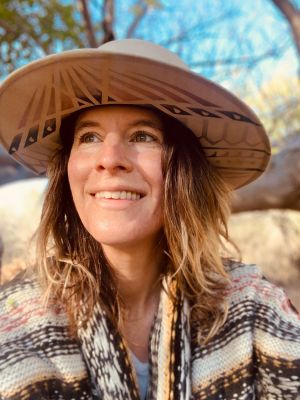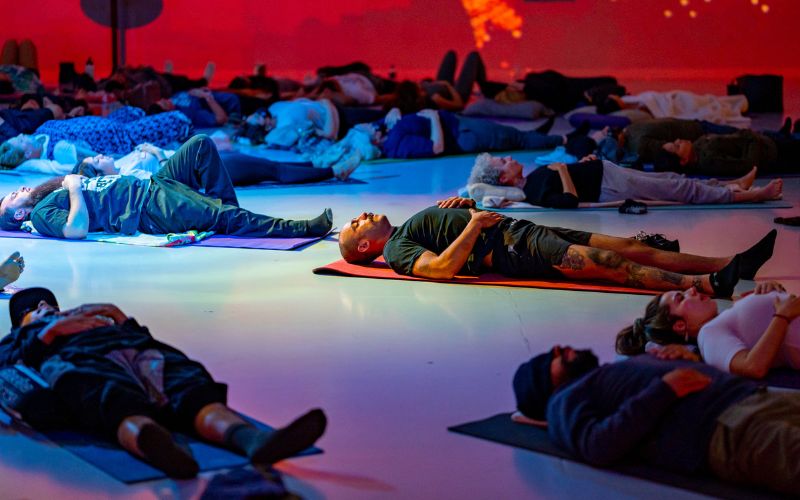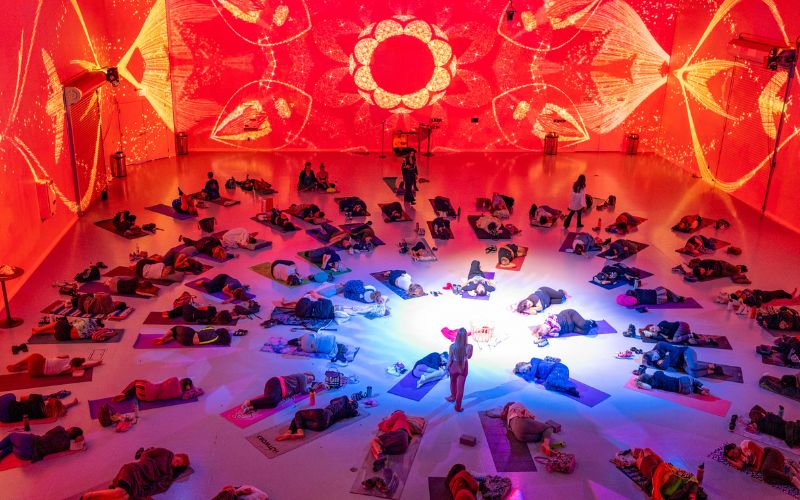The breath is the bridge between the body, mind and spirit, says Vivian Rosenthal, co-founder of Frequency Breathwork in New York City.
In her breathwork practice, Rosenthal estimates that she has “guided” more than 10,000 people, who often achieve – in the parlance of Stanislav Grof – non-ordinary states of consciousness.
Breathwork is a powerful adjunct to psychedelic-assisted therapies, perhaps even an essential component. But as Rosenthal has discovered over the past seven years, breathwork by itself can occasion psychedelic-like experiences – and transformational healing.

“Breathwork is this very accessible, very powerful therapeutic medicine that mimics plant medicine and psychedelics in terms of how it works in the brain and how it opens the heart and how it unwinds trauma,” Rosenthal explains. “It’s doing all the same things” without putting practitioners or patients in any legal jeopardy.
The fact that breathwork is a non-pharmacological modality makes it much less complicated to convene a public event like the upcoming “Symphony of the Soul: A Journey of Music and Mindfulness.”
Scheduled for April 27 at the Flint Institute of Music Capitol Theater in Flint, Michigan, “Symphony of the Soul” will combine breathwork – led by Rosenthal – live symphonic music (featuring members of the Flint Symphony Orchestra) and visual projections to create a unique path to mindfulness, healing and expanded consciousness, organizers promise.
The seeds of “Symphony of the Soul” were sown during a Rosenthal-led breathwork retreat at Diamond Rose Sanctuary in Connecticut. One of the attendees was Phil Hagerman, a Flint-based entrepreneur, investor and business executive. As the two had an opportunity to chat, Rosenthal shared her vision for “Symphony of the Soul.”
“I’ve had this dream to take the breathwork to a bigger stage and take it out of just psychedelics or just wellness or just mental health and make it a cultural movement of healing,” Rosenthal says.

Hagerman asked Rosenthal if she’d be interested in bringing this type of event to Flint. As she thought about the hardships that Flint residents have endured in recent years – most notably the water crisis – Rosenthal concluded that Flint would be “the perfect place” for an immersive healing experience.
“I was like, ‘That’s a community that needs healing,’” Rosenthal recalls. “I thought it would be so much more interesting to launch ‘Symphony of the Soul’ there than in New York or L.A.”
Hagerman introduced her to Rodney Lontine, president and CEO of the Flint Institute of Music. After Rosenthal led a breathwork journey for Lontine and other members of the institute, she says “they green-lit the project that night.”
Rosenthal’s Breathwork Journey
Life is full of unexpected twists and turns, and Rosenthal didn’t set out to become a certified breathwork facilitator. She earned her master’s degree in architecture from Columbia University in 2001. Her graduate thesis focused on how immersive spaces shape and affect human psychology.
Rosenthal had founded a tech startup and was running an incubator for Google when a perfect storm of health issues – including Lyme disease – landed her in the Mayo Clinic about 10 years ago.
“They gave me a cocktail of prescription meds for my depression, anxiety, panic and insomnia, and there was no link between the body and the mind and the spirit [in traditional Western medicine], at least at the time,” Rosenthal says.
That experience motivated her to seek other, more holistic healing modalities.
One of the first she discovered was kundalini yoga. “It immediately helped me mentally, physically, emotionally, spiritually, energetically – so much so that the people in my life were like, ‘There are two different Vivs that show up on a given day: one who has done her practice and one who hasn’t.’”
Some time after that, she was introduced to breathwork. Although Rosenthal still loves kundalini yoga, there was something about breathwork that clicked with her.
“I’m very much an Aquarian, and I’m really here for planetary healing and collective healing, so my mind thinks in terms of scale,” Rosenthal explains. “I loved that breathwork was so accessible, and it was fun and it was easy and it was dynamic and you did it with music and you could be young or old – there was no barrier to entry. [Since then] I’ve done this with people with cancer, with veterans, with kids, with people who are in their 80s. And so I just thought, ‘Wow, that’s pretty incredible.’”
In 2017, Rosenthal opened Frequency Breathwork in New York City. The original location was a geodesic dome “with projections and visuals, kind of pulling from my architecture background.”
“We had animated, sacred geometry visuals and mats, and everyone laid down and we did guided breathwork, and it was really transformational for a lot of people,” Rosenthal recalls. “It just kind of took off.”
Discovering Your Inner Healer
After guiding more than 10,000 people at Frequency Breathwork and at Diamond Rose Sanctuary – an idyllic retreat space surrounded by wetlands on the Connecticut coast – Rosenthal has seen firsthand how breathwork can have a transformative effect on people who are struggling with depression, anxiety, trauma, chronic stress and pain. Like psychedelics, breathwork often produces experiences and awakenings that are far beyond the realm of traditional Western medicines.
“A lot of people have rebirthing experiences,” Rosenthal says. “A lot of people experience meeting an ancestor who’s no longer alive. A lot of people see colors and shapes – and that happened to me yesterday with a client.”

Rosenthal asserts that breathwork and psychedelics “directly complement each other” – so much so that she believes that utilizing breathwork for preparation and integration will lead to “improved outcomes” in psychedelic-assisted therapies.
When she went through MAPS’ MDMA-therapy training program, Rosenthal says she was pleasantly surprised by the degree that breathwork concepts and philosophies were woven into the training.
“It was very encouraging actually to see how much of Stanislav Grof’s work has informed the MAPS MDMA training, and I think the biggest thing that I talk about and he talks about – and I’m certainly influenced by this in his writing – is that breathwork isn’t about someone healing you from the outside. It’s about discovering your own inner healer – and we all have that.
“To me, that’s what ‘Symphony of the Soul’ is about. It’s giving people an opportunity to experience their own body and breath and spirit as their own their higher self and their healer, and it’s tuning people to that higher frequency. Once they can come into resonance and feel that – and not just feel depressed or anxious or scared or fearful or addicted – they have a blueprint, and they can come back to the blueprint.”
‘Symphony of the Soul’
“Symphony of the Soul: A Journey of Music and Mindfulness” is scheduled for 7:30 p.m. on Saturday, April 27. For more information and tickets, visit the Capitol Theater website.
Proceeds from the event will directly support a breathwork study for veterans with PTSD, conducted in partnership with the nonprofit Heroic Hearts Project. The research, which will take place at Diamond Rose Sanctuary, aims to demonstrate the effectiveness of breathwork as a complementary treatment for mental-health conditions, paving the way for greater acceptance and accessibility.

